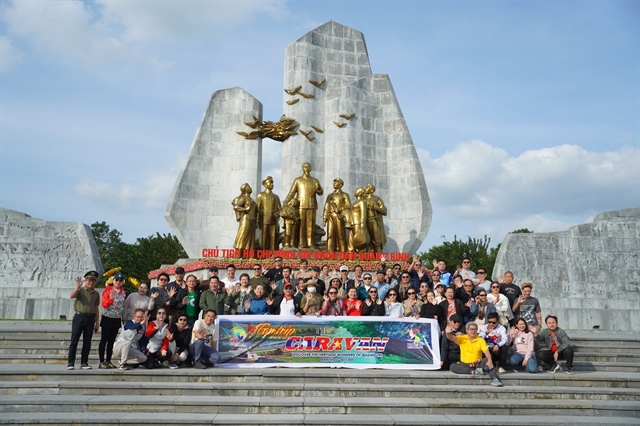 Life & Style
Life & Style

When people try any fasting routine usually they want to lose weight. A few days later they may notice that they are not only loosing weight but also muscle mass.

|
| Dr. Andres Sosa. — Photo courtesy of Family Medical Practice |
by Dr. Andres Sosa*
Why fasting?
When people try any fasting routine usually they want to lose weight. A few days later they may notice that they are not only losing weight but also muscle mass. This is exactly the opposite to most of the advices we used to hear from our grandparents or any athletic coach between 1960 and 2010 about eating three times per day or to have small meals several times per day (especially carbohydrates and protein, avoiding fats at all cost) if we wanted to keep or to increase our muscle mass while losing weight.
Fasting routines have become very popular in wellness and fitness nowadays, but the truth is that humans have been using them for religious and medical reasons since the beginning of time. During the Greek civilisation the training routines of the Spartan Army included a popular phrase that has inspired many athletes: “Beasting, Feasting and Fasting”, which means “workout hard, indulge yourself eating and fast". This was, in simple words, the way of life of a spartan soldier, the deadliest army in the ancient world.
The recent popularity of fasting has spread worldwide since 2016 after hearing the results of Dr. Yoshinori Ozumi (Fukuoka, Japan), a scientific researcher who earned the Nobel Prize in Medicine and Physiology for his discoveries about the mechanisms for autophagia and its relationship with aging, diseases and cancer.
Breaking the dogma
Since kids, we have been told we should eat well every day and we should not skip any meals. Plus, if anyone gets sick we usually hear this person could be skipping meals or we can get sick if we do not eat. As if it's not enough, we have no idea about good nutrition and the way we eat is strongly influenced by culture, religion and economy. We see hunger as something terrible at the same time we see glut and obesity as signs of wellness and prosperity.
To understand the following information we can start from the fact that a human being can stay up to 382 days without having any food. In 1965 Angus Barbieri, from Maryfield, Scotland obtained a Guinness World Record when he lost 125Kg (from 207Kg to 82Kg) in the longest fasting period registered so far. Relax, nothing bad will happen to us if we skip one or two meals any random day. A similar situation happens during a war, while being in prison or severely ill: people can survive several days without tasting any food.
The science behind fasting and exercise
Intense physical exercise creates acute stress to our body that will trigger a biological reaction. During certain conditions, our brain basically “thinks” that our life is being threaded so we need to activate the right mechanisms in order to be ready for further episodes: Sympatric Nervous System activation. In scientific terms, this is known as our adaptative response to physical stimulation. Some other examples of these mechanisms are pain, pressure, heat, cold and balance. We all do have nerves and specialised receptors in all these situations.
One of the best ways to stimulate our body is to work out hard with weights and HIIT (high-intensity interval training). Immediately after training the adaptative response begins and it is mainly hormonal:
- Growth hormone (GH) rate increases
- Insulin Growth Factor 1 (IGF-1) concentrates in the worked area
- Same happens with Testosterone, DHT and - one of the most amazing effects,
- Insulin sensitiveness decreases
- Improve autophagia
- Increase ketones levels (physical exercise is ketogenic)
This adaptive response sensitises our body to the nutrients we need to obtain from our first meal after fasting and intense exercise, especially protein and fats. This effect is higher if we come from a 16-hour fast or more (the most popular fasting routine is 16:8 skipping breakfast or dinner).
In summary, a combo that is definitely worth trying: Intermittent fasting + Intense Physical Exercise + Low Carb Diet (any) + Fasting, in that order. A rest day in between is highly advised as our muscles need time to recover and to promote muscle fibers repair and multiplication.
Here is an example of a daily routine skipping breakfast and with a morning workout:
- Wake up early (before sunrise)
- Warm up (stretching), then do HIIT for 20min (TABATA is very easy to do at home)
- Lift Weights: use compound exercises to work more muscles per set (Beasting)
- Go to work
- First meal: Low or no carbs, high proteins, mid fats (Feasting)
- No snacks in between meals
- Second meal : ow or no carbs, high fats, mid proteins
- Fasting for at least 16 hours until your next meal (Fast)
- Go to bed early (before midnight). — Family Medical Practice.
*Dr. Andres Sosa is an orthopedic surgeon trained in Italy specialised in the diagnosis and treatment of musculoskeletal trauma (fractures, dislocations, wounds), degenerative joint diseases (osteoarthritis, spine disc herniation) and sport lesions (sprains, joint instability, tendon ruptures) with a particular and deep interest in upper limb, spine and knee. With two European masters degrees and multiple courses overseas, Dr Sosa is able to perform open surgery, internal fixation, shoulder/knee arthroscopy, external fixation, and joint replacement as well as non-surgical pain management therapies.
For more advice on any medical topics, visit Family Medical Practice Hanoi at: 298 I Kim Mã Street, Ba Đình District. Tel: (024) 3843 0748. E: hanoi@vietnammedicalpractice.com.
FMP’s downtown Hồ Chí Minh location is at Diamond Plaza, 34 Lê Duẩn, District 1; 95 Thảo Điền Street, District 2. Tel: (028) 38227848. E: hcmc@vietnammedicalpractice.com
FMP Đà Nẵng is located at 96-98 Nguyễn Văn Linh Street, Hải Châu District, Đà Nẵng. Tel: (0236) 3582 699. E: danang@vietnammedicalpractice.com